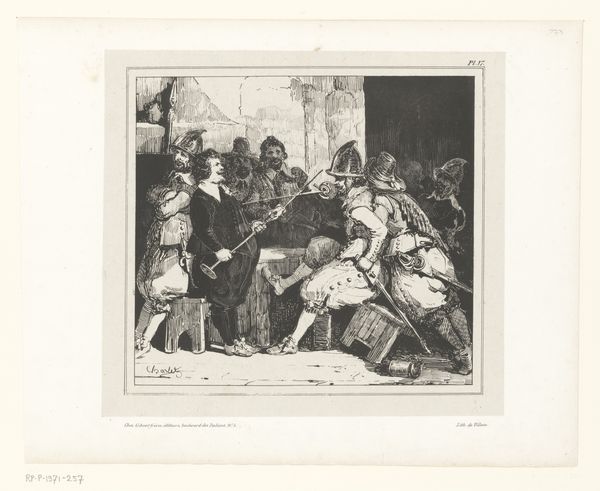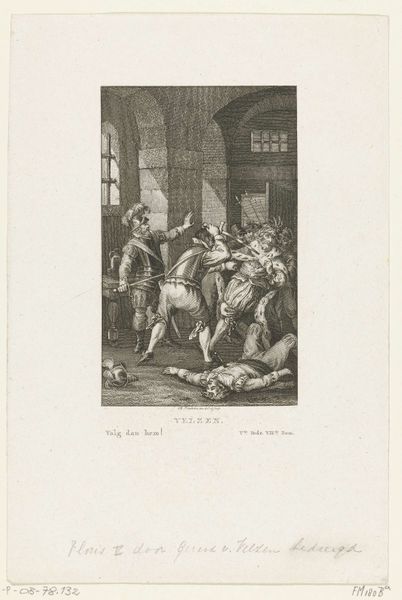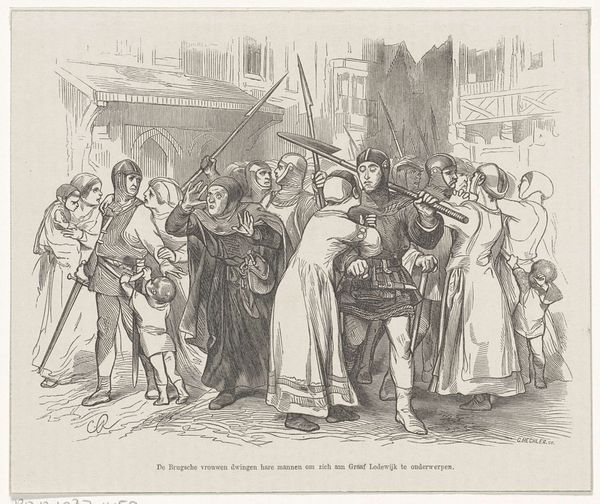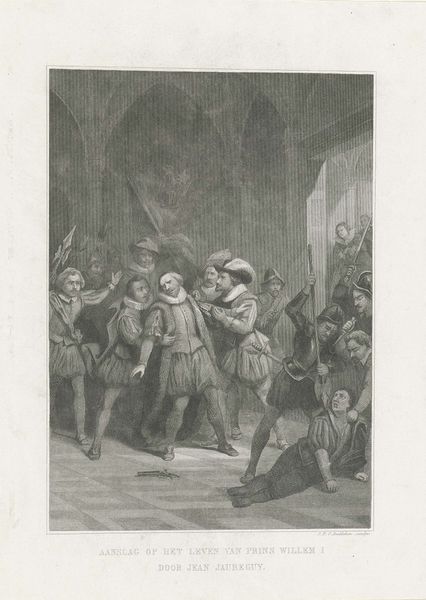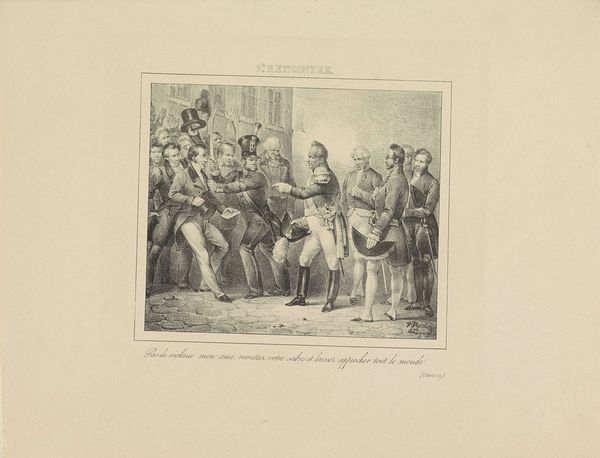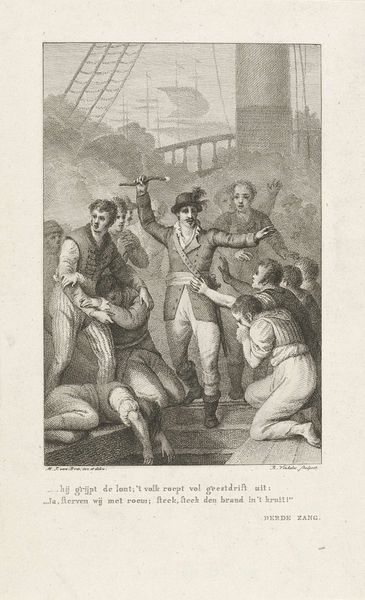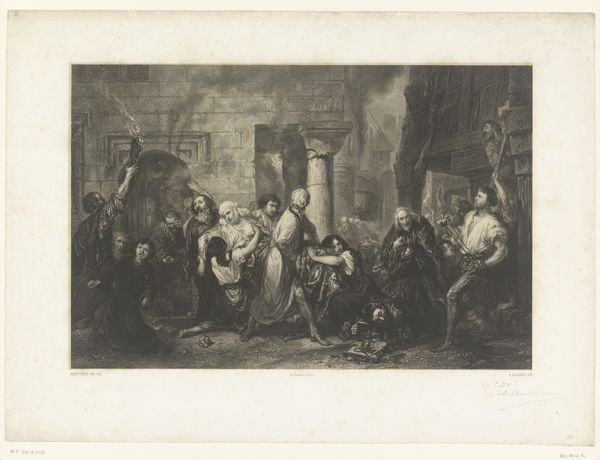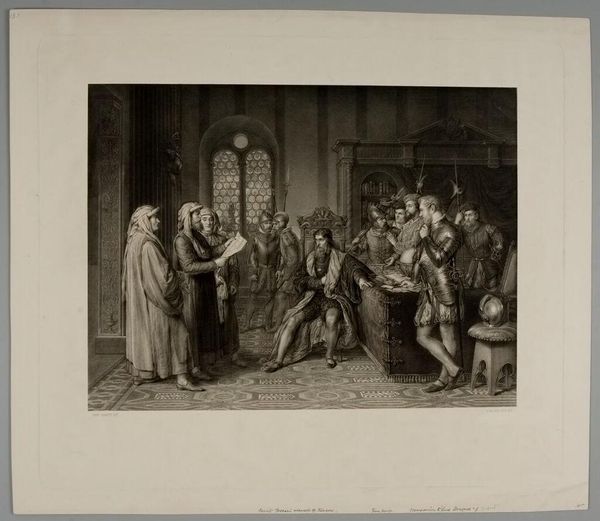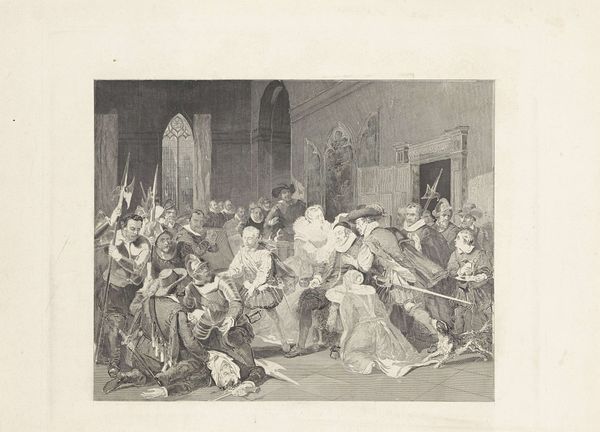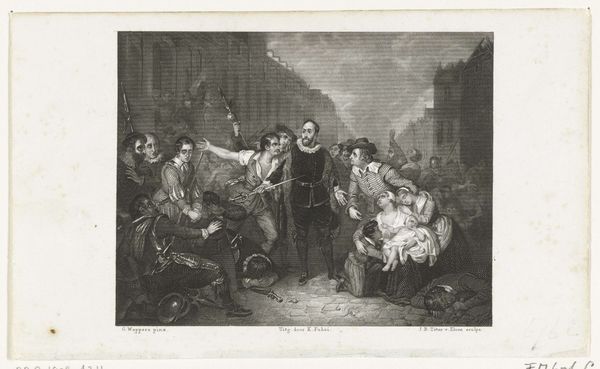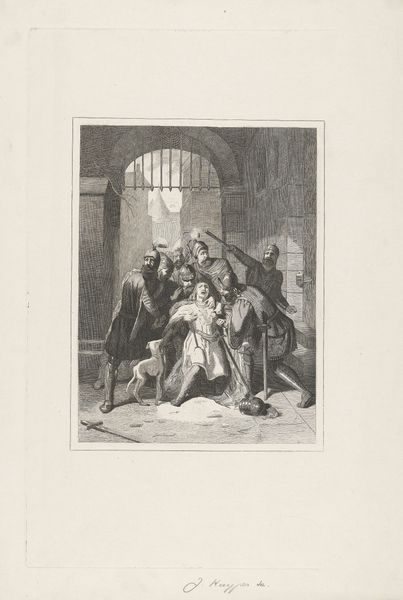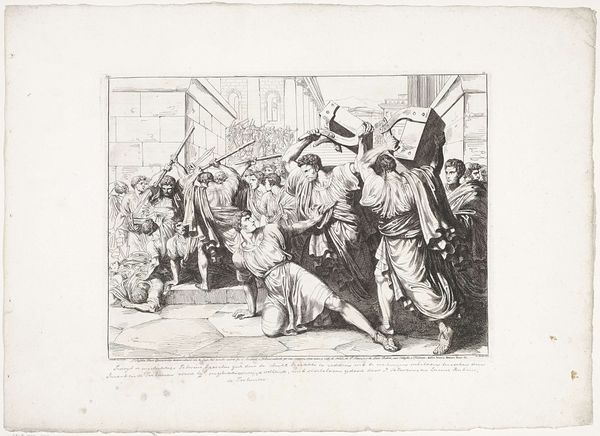
print, etching, engraving
#
light pencil work
#
narrative-art
# print
#
etching
#
figuration
#
pencil drawing
#
history-painting
#
engraving
Dimensions: height 254 mm, width 402 mm
Copyright: Rijks Museum: Open Domain
Editor: Here we have "Aanval voor de slotpoort", or "Attack at the Castle Gate," an etching by J. Kuyper, dating from around 1860 to 1870. The scene is really intense, so dynamic, full of figures struggling near what looks like a castle entrance. What stands out to you in this print? Curator: The raw emotion and the struggle for power are immediately apparent, aren't they? Kuyper situates us in a historical context of conflict, likely drawing from Dutch or European narratives. I think it’s important to consider whose stories are being told. Who are the aggressors and who are the victims here? Are they representative of a broader social commentary? Editor: I see the figures grappling, but it's not immediately obvious to me who's "right" or "wrong." Is Kuyper making a statement, or just showing us a historical scene? Curator: That ambiguity is precisely where the work invites critical engagement. Consider the historical moment—the rise of national identities, colonial power struggles. How might this image play into constructing notions of heroism or barbarity? Are we meant to empathize with the apparent defenders of the gate, or question their authority? Etchings like these often reinforced dominant ideologies. Editor: So, beyond just being a historical snapshot, it might actually be promoting a certain viewpoint? Curator: Absolutely. Art is rarely neutral. By analyzing the composition, the portrayal of different figures, and the implied narrative, we can unpack the loaded messages embedded in what might initially seem like a straightforward historical depiction. Who is in the light and shadow, what clothing, arms or lack thereof is used to illustrate status or intent? Editor: That gives me a lot to think about when viewing historical art. I appreciate this deconstruction of whose perspective is dominant here. Curator: And hopefully prompts reflection on how we interpret similar power dynamics in contemporary visual culture. It’s all about understanding the dialogue between past and present.
Comments
No comments
Be the first to comment and join the conversation on the ultimate creative platform.

